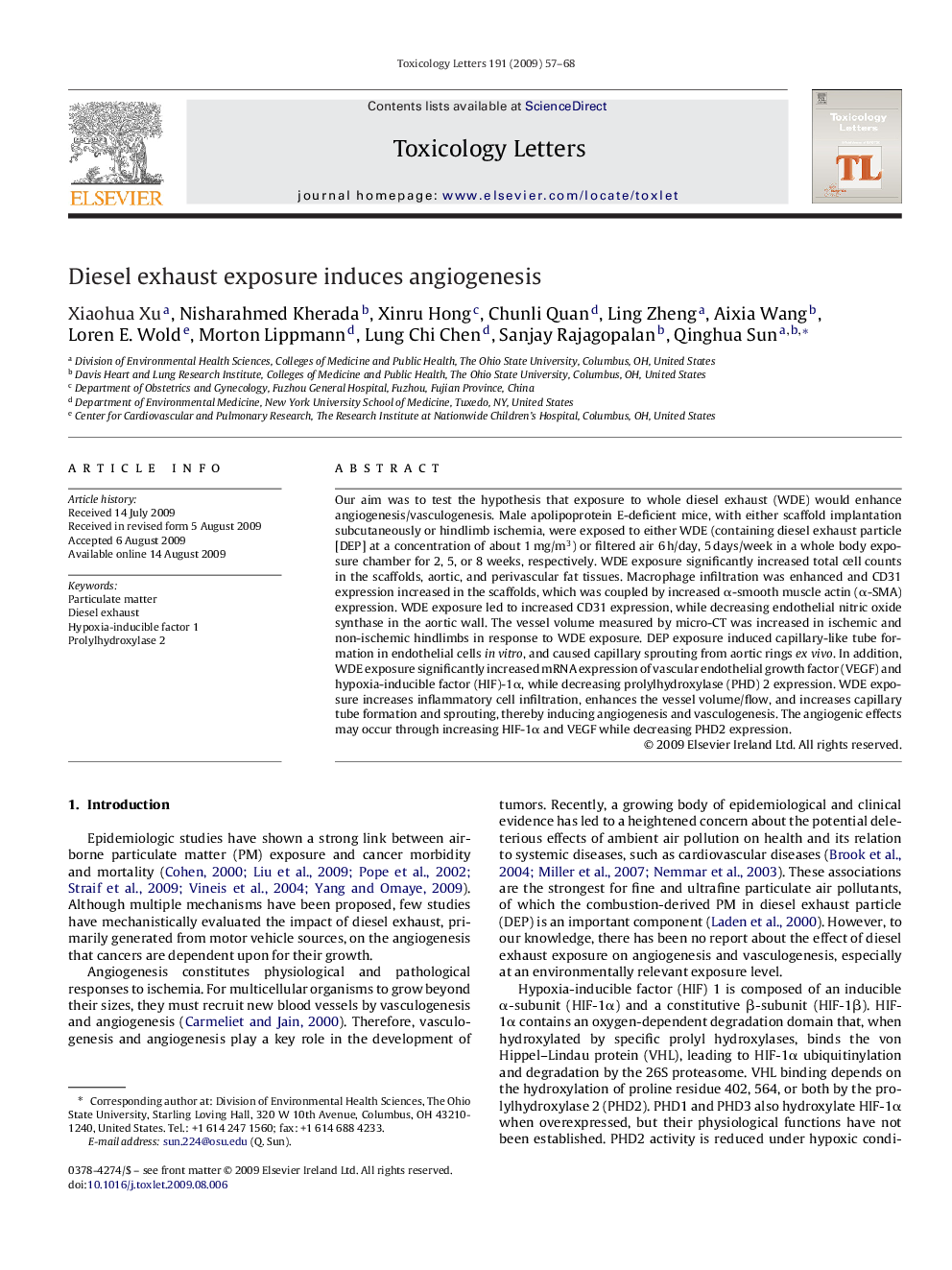| Article ID | Journal | Published Year | Pages | File Type |
|---|---|---|---|---|
| 2600960 | Toxicology Letters | 2009 | 12 Pages |
Our aim was to test the hypothesis that exposure to whole diesel exhaust (WDE) would enhance angiogenesis/vasculogenesis. Male apolipoprotein E-deficient mice, with either scaffold implantation subcutaneously or hindlimb ischemia, were exposed to either WDE (containing diesel exhaust particle [DEP] at a concentration of about 1 mg/m3) or filtered air 6 h/day, 5 days/week in a whole body exposure chamber for 2, 5, or 8 weeks, respectively. WDE exposure significantly increased total cell counts in the scaffolds, aortic, and perivascular fat tissues. Macrophage infiltration was enhanced and CD31 expression increased in the scaffolds, which was coupled by increased α-smooth muscle actin (α-SMA) expression. WDE exposure led to increased CD31 expression, while decreasing endothelial nitric oxide synthase in the aortic wall. The vessel volume measured by micro-CT was increased in ischemic and non-ischemic hindlimbs in response to WDE exposure. DEP exposure induced capillary-like tube formation in endothelial cells in vitro, and caused capillary sprouting from aortic rings ex vivo. In addition, WDE exposure significantly increased mRNA expression of vascular endothelial growth factor (VEGF) and hypoxia-inducible factor (HIF)-1α, while decreasing prolylhydroxylase (PHD) 2 expression. WDE exposure increases inflammatory cell infiltration, enhances the vessel volume/flow, and increases capillary tube formation and sprouting, thereby inducing angiogenesis and vasculogenesis. The angiogenic effects may occur through increasing HIF-1α and VEGF while decreasing PHD2 expression.
